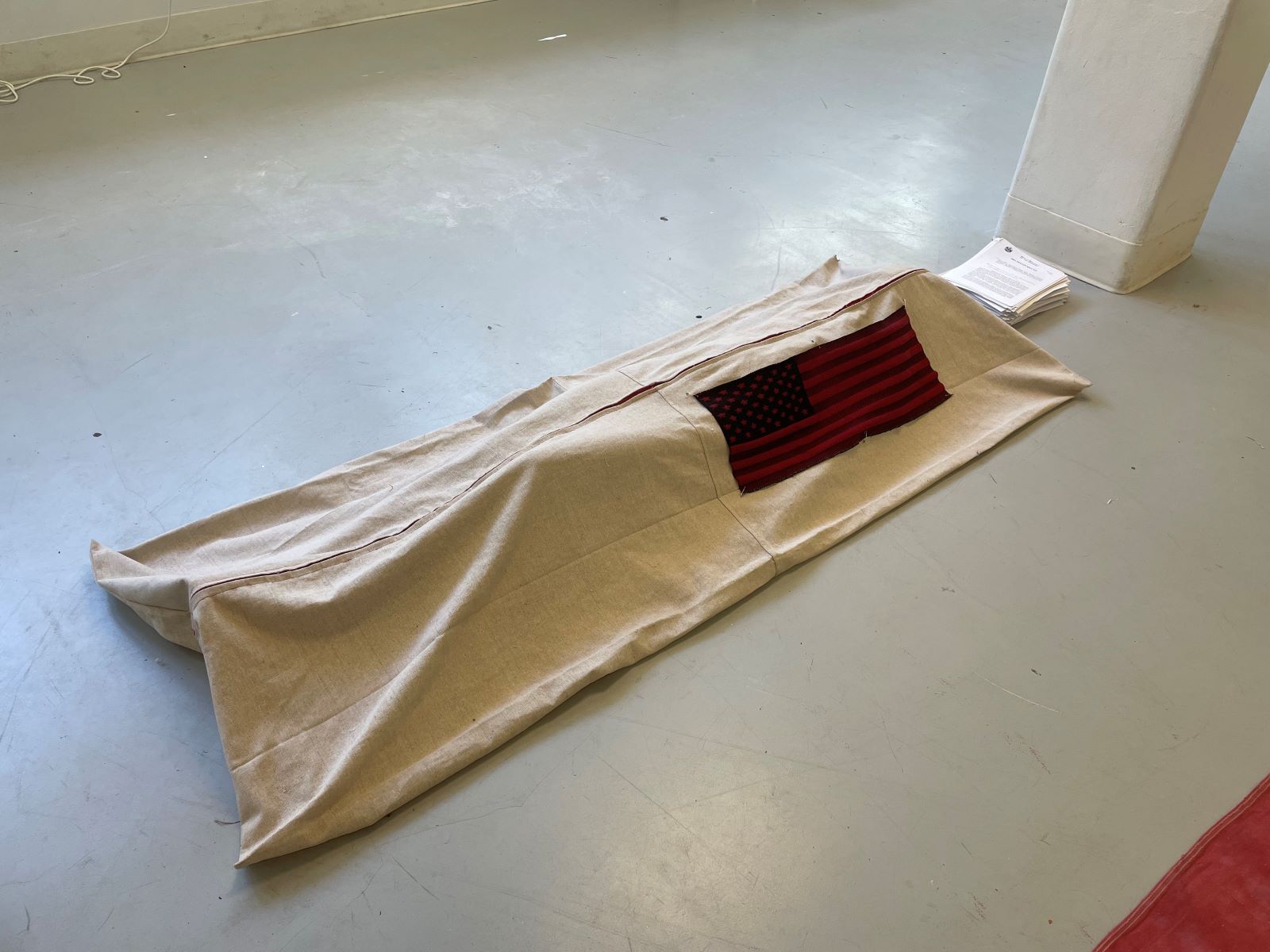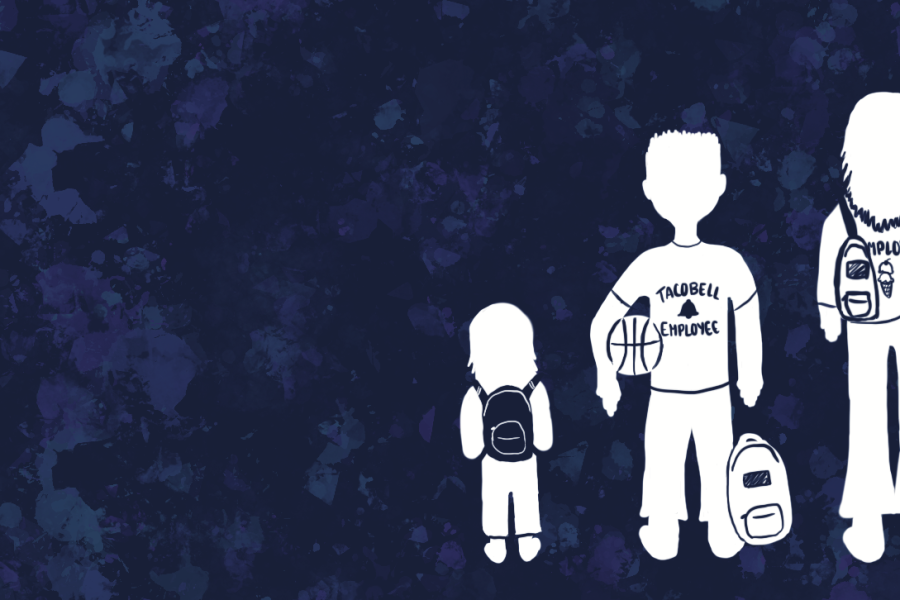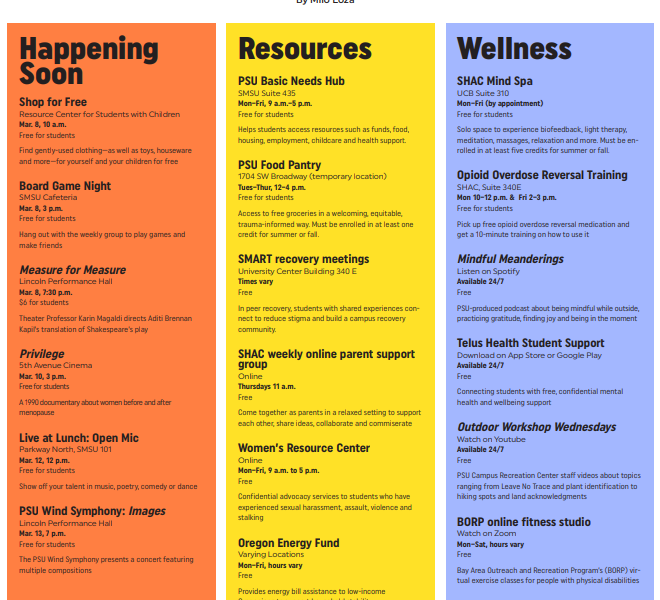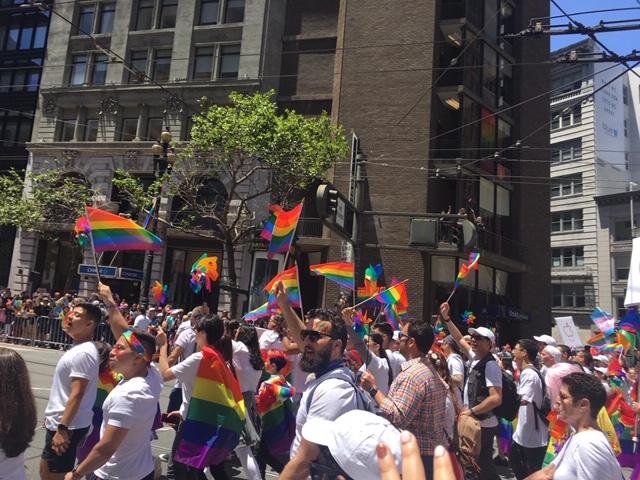Izaak Fazekas is an interdisciplinary transmedia artist in the BFA program at PSU. Originally from New Orleans, Fazekas relocated to Portland in 2019 in order to pursue an education in the PNW. Fazekas spoke with Portland State Vanguard to discuss his art practice and some of his recent works.
Vanguard: What kind of materials and mediums do you enjoy working with?
Fazekas: I paint. I draw. I do sculpture. I like sculpture a lot. I feel like it gets things across. But also within my sculpture, I do textile work. I do computer programming sometimes…
If I make a work, and I’m like, ‘I want it to be this way,’ and say it involves glassblowing—I don’t know how to blow glass, but there’s a certain piece I want to make eventually that involves glassblowing—so I’m like, ‘Okay, I don’t know how to do that, but I’m going to learn because it’s got to be made out of glass for this to work.’ I love learning new things, and that’s a big part of my art making…
I make a lot of installations where you can walk into it… You become part of the artwork as you’re experiencing the artwork. But I also make a lot of work about the human body and specifically about trans and queer bodies because I’m trans and queer.
VG: Can you tell me about a recent piece of yours?
Fazekas: One of them is called ‘I Fear God, Not Death…’ I was doing research on basically the response to [COVID-19] by the United States and the response to [COVID-19] by people in the United States, specifically on people who were anti vax or against getting the vaccine, and the mentality behind valuing your held beliefs over the general health of a population. Or basically valuing your belief in God over your belief in your life…
The title of it originally came from… a protest sign that was like, ‘I fear God, not COVID’ and I was like, ‘Okay, to me, that means “I fear God, not death,”’ because if you’re talking about what you are risking when you don’t get the [COVID-19] vaccine is you’re risking your life basically, especially at that point in the pandemic.
VG: Can you tell me about the physical construction of this piece and your choice of materials?
[‘I Fear God, Not Death’ is composed of a 12- by 9-feet U.S. flag splayed out on the floor. Suspended above the flag is a crocheted wire bag full of needles and syringes.]
Fazekas: Each material I’m using means something to the piece, so it adds something. It’s [made from] a cotton flag, and cotton was a share crop that was farmed by enslaved people in the United States, up until pretty recent history. And now a lot of cotton fields are worked by immigrant workers. And I’m from the south, so that’s like a sharecrop that I’m very familiar with the history behind. It’s a colonialist crop in my mind.
The red portion of the flag is dyed with cochineal, which is a bug that is originally from South America. But when South America was colonized by the Spanish they, quote unquote, ‘discovered this new dye’ and they brought it to Europe, and it became a dye that was primarily used by royalty, because it was very hard to come by, and it made this beautiful, bright red color…
The bug portion of that also talks about colonialism and the [oppression] of Indigenous identities—which is just part of America in general—which is why I made the flag out of those things. But then I over dyed that with a petroleum [dye], which kind of talks about our hyper-consumption and the basically pillaging [of] the earth…
So the material significance of all that is to talk about colonialism and the United States as an imperial empire.
And the reason I have the flag on the ground is that we’re always told you can’t ever let the American flag touch the ground. It’s like a sacred object. And to me, it’s almost when, in Christianity, the symbol of the crucifix almost becomes more important than God in a religion.
And for me, it was like the American flag has become more important than what the American flag is supposed to stand for—where it’s become a god to certain people, and it can’t be touched or desecrated. And it’s just a piece of fabric. ‘Do you value this piece of fabric more than people’s lives?’ is the question I’m asking there.
VG: What’s the meaning behind the bag of needles?
Fazekas: As I was making this piece, [the bag with the needles hanging above this flag] became both about [COVID-19] vaccines, which were administered with a needle and syringe, but also about the opioid epidemic.
And how… our government does not support people who have addiction. And it doesn’t treat people who have addiction like people. People that need help and could get that help if we decided that they were worth it, and Portland has a very distinct problem with that.
And I think it’s a failing of our government that people do not get the help that they need. And it’s also… the fact that opioids were given to people to become addicted to by large pharmaceutical companies. Those companies are backed by lobbyists who run the United States.
So it’s all intertwined together. It’s talking about many different things, but also specifically how our medical complex that we have in the United States doesn’t support people. It’s not meant to support people, it’s meant to make money. And so at the same time, it’s that flag becomes the whole of the people of the United States who are being trampled on.
The point of this piece is for people to walk on it, because the flag was so big that you can’t see what’s inside the bag if you don’t walk on the flag. So if you’re not willing to step on this symbol that you’ve been told to respect so much, [then] you’re not gonna get the bigger picture. You’re not gonna see what’s actually wrong with this country if you’re not willing to look past the propaganda that you’ve been fed.
VG: You mentioned that you’ve created another piece inversely titled ‘I Fear Death, Not God.’ Can you tell me about this second piece?
Fazekas: [‘I Fear Death, Not God’] is a body bag also made out of cotton—the same material as the flag but undyed—and so I sewed it into a body bag and wove a black and red American flag that I pinned to the top of the bag, over where the heart would be. Inside of the body bag, is a mannequin and a speaker playing a recording of the original version of “The Star-Spangled Banner” from 1814…
Sitting at the head of the body bag, where the head is, is a stack of papers… They are all of the anti-transgender bills that [have] been either proposed or passed in every single state of the United States—recognized states of the United States, I will say.
And, as you can see, the stack of paper is enormous, and that is not even all of them. I did not have the time or energy to print out every single bill that had been proposed and passed. It was over 400. And this, to me, is a cry of distress. For me and also from the transgender community.
And so this piece is about a cry of distress from a group of people who [are] being persecuted by their country. And that persecution is ongoing and systemic, and it’s not quite in the forefront right now as it was a year ago, I think.
But it is of the same importance that people—queer and transgender people—are… systematically oppressed in this country. I think it’s a fact that people don’t really realize until it’s put in front of their face in the form of a body bag and a stack of bills that say somebody shouldn’t exist.
I think it’s fundamentally wrong of a country to tell somebody that they don’t have a right to exist or don’t have a right to do with their body as they see fit.
VG: Who do you create for? Do you have a specific audience in mind, or a goal that motivates you to create?
Fazekas: All my work talks about people and connecting on a human capacity to people’s emotions. And I want my work to bring awareness to people that you may not be able to directly communicate with or relate to just because you don’t know their life experiences…
My work with the American flag and the body bag, that was trying to bring awareness to people who don’t have a transgender or queer experience—to people who don’t have an experience with the United States medical system that doesn’t support them…
I feel like artists are, in their [own] way, historians… My way of documenting is to make art about it, and so I think when there’s something that happens that really hits me, like the passing of anti-transgender laws and bills in different states, or feeling that people aren’t bearing witness to people who have opioid addictions in a way that’s humane.
I think those kinds of things are what motivates me. [It’s] feeling like I have to bear witness to something.






